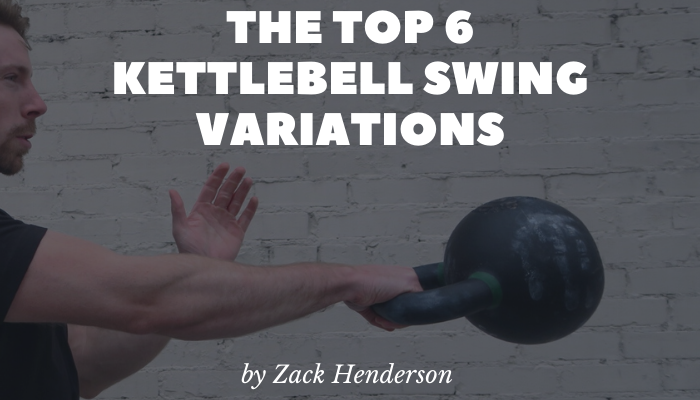
More options = More ways to progress
The swing offers a veritable smorgasbord of benefits to your physique and performance.
Like PF Flyers, the kettlebell swing is a proven classic that will make you run faster and jump higher. Unlike the shoes, however, the kettlebell does this by stripping body fat and boosting raw strength.
But what do we mean when we say “swing?”
As I see it, a swing is defined by 2 positions – the backswing (hip hinge) and the lockout (standing plank). Everything else is negotiable.
Your swing of choice will be determined by your goals, training preferences, and what bells you have on hand.
With that in mind, here’s a shortlist of kettlebell swing variations (and why you should do them) that only require one bell.
#1) The Hardstyle 2-Hand Kettlebell Swing
This is the bread ‘n butter of kettlebell training and will build your foundation for the other kettlebell ballistics – 1-arm swings, cleans and snatches.
The 2-hand swing is all about dialing in your most powerful hip hinge and extension.
#2) The Low Pendulum 2-Hand Kettlebell Swing
While a chest-height swing is typically encouraged, there are a few benefits for keeping the apex of the arc much lower (around belly-button height).
For starters, if you’re moving up a bell size, you need only be concerned with acclimating your back, hips, and grip to the heavier weight. The low swing allows you to practice without overdoing it.
Overzealous swingers tend to “muscle” a kettlebell swing by hyperextending the back and tensing the arms and shoulders. By deliberately practicing a low swing, these types get a chance to relax and hone in on the standing lockout position.
#3) The 1-Hand Kettlebell Swing
The single-arm swing is our first foray into asymmetric loading. We’ve got a hunk of cold iron in one hand and nothing but air in the other.
The key here, as with all 1-arm work, is to fight to stay square in the shoulders and hips. The major anchor points to consider are the lats and pecs (“squeezing” them around the shoulder to control the mid-line trajectory of the kettlebell) and the feet (staying balanced and rooted).
And what to do with the free arm?
You have two basic options:
- Bring your arm up to a “guard” position – bend the elbow and make a light fist by the shoulder or chin.
- “Shadow” the working arm – reach back during the backswing and come up to tap the bell at the top.
#4) Hand-To-Hand Kettlebell Swing
Switching the bell from one hand to another without interrupting the swing pattern is an important skill for two big reasons:
- When you are training with higher swing volume, you’ll need to manage fatigue in the grip, forearms, and lats. Being able to switch the load at will allows one side to recover as the other works.
- Kettlebell complexes and chains involve performing a variety of exercises back-to-back, usually one side at a time. The swing switch allows you to complete a round without setting the bell down.
For example:
Left side Swing, Snatch, Swing, Clean, Press, Swing-Switch to Right side, Snatch, Swing, Clean, Press…
#5) Overspeed Eccentric Kettlebell Swing
A simple way to make any kettlebell feel heavier is to add force to the backswing.
We can do this with a few methods:
- At the top of a swing, have your training partner lightly push the bell back down (as demonstrated in the video).
- Stand on and loop a resistance band around a kettlebell handle, forming a triangle between your feet and the weight.
- Actively pull/push the bell into the backswing with your lats and triceps.
Whether you’re working with a light kettlebell or just want to get some extra juice out of a hefty one, the active eccentric will turn up the heat on any swing.
#6) The Dead-Stop Kettlebell Swing
Last up is the dead-stop or “Power” swing.
This variation is technically the same as a 2-hand swing but is only performed in single reps. Power production is trained in the same vein as heavy barbell deadlifts – eliminating momentum and pulling from a dead stop every time.
It may look easier on paper, but the dead-stop swing will seriously challenge the posterior chain and jacks up the heart rate faster than burpees.
A Swing For Every Season
There are plenty more swings to learn, but these six variations will take you far.
Practice, experiment, and always respect your body and the bell.